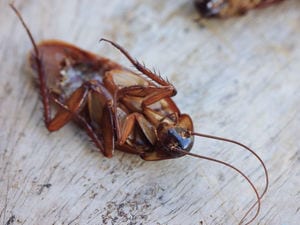
THURSDAY, Feb. 1, 2018 (HealthDay News) — Improperly used “bug bombs” are making Americans sick — and improved labeling isn’t helping, government health officials say.
Pesticide foggers are often used indoors to combat insects, such as fleas, cockroaches and bed bugs. But directions must be followed carefully because breathing the spray mist can cause respiratory and gastrointestinal problems.
More than 3,200 bug bomb-related illnesses — including four deaths — were identified in 10 states between 2007 and 2015, according to the new report.
Failure to leave the home during the “bombing” and early re-entry were the most common reasons for pesticide exposure, the researchers said.
Excessive fogger use — another culprit — was tied to more severe respiratory or gastrointestinal symptoms.
To reduce the risk of illness, the U.S. Environmental Protection Agency required improved labels on these “total release foggers” made after September 2012.
But the investigators found no significant difference in the number of bug-bomb illnesses reported in the first three years after the new labeling took effect.
“Integrated pest management strategies need to be adopted, as well as better communication about the hazards and proper uses of [total release foggers],” Ruiling Liu and colleagues wrote in the report. Liu is with the U.S. Centers for Disease Control and Prevention’s National Institute for Occupational Safety and Health.
More than nine in 10 fogger-related chemical exposures occurred in homes, with 5 percent of patients aged 5 years or younger. Another 14 percent were 60 or older, the report noted.
Although the updated labeling includes illustrations, researchers found the directions often went unread or ignored. For example, many users left the treated room but not the premises, as directed.
Or they left home, but returned to retrieve a pet or forgotten item.
However, some users ventilated treated homes the recommended length of time or longer, but still got sick. This might mean the recommended ventilation period is insufficient, the report suggested.
Patients’ symptoms included cough, trouble breathing and upper respiratory pain or irritation. Vomiting, nausea, and abdominal pain or cramping were among other complaints, the findings showed.
Because pre-existing asthma was linked to more severe illness, the researchers said a special warning might be needed for people with this respiratory condition.
The chemicals most often involved were pyrethroid (78 percent of cases) and pyrethrin (24 percent), according to the report.
If you come into contact with the fogging chemicals, health experts say you should leave the area at once and wash your skin. But avoiding the pesticides from the get-go is even better, they advise.
“In order to avoid toxic exposures, do not use foggers in small, enclosed spaces, and inform your loved ones if an area has been treated,” said Dr. Payal Sud, a medical toxicologist in New York who was not involved with the new report.
“Especially keep your children and pets away from the treated area,” added Sud, associate chair of Northwell Health’s Glen Cove Hospital.
“When you return to the area, make sure the doors and windows are opened to promote ventilation of the fumes,” Sud said.
The findings were published in the Feb. 2 issue of the CDC’s Morbidity and Mortality Weekly Report.
More information
The U.S. Environmental Protection Agency outlines safety precautions for bug-bomb use.
